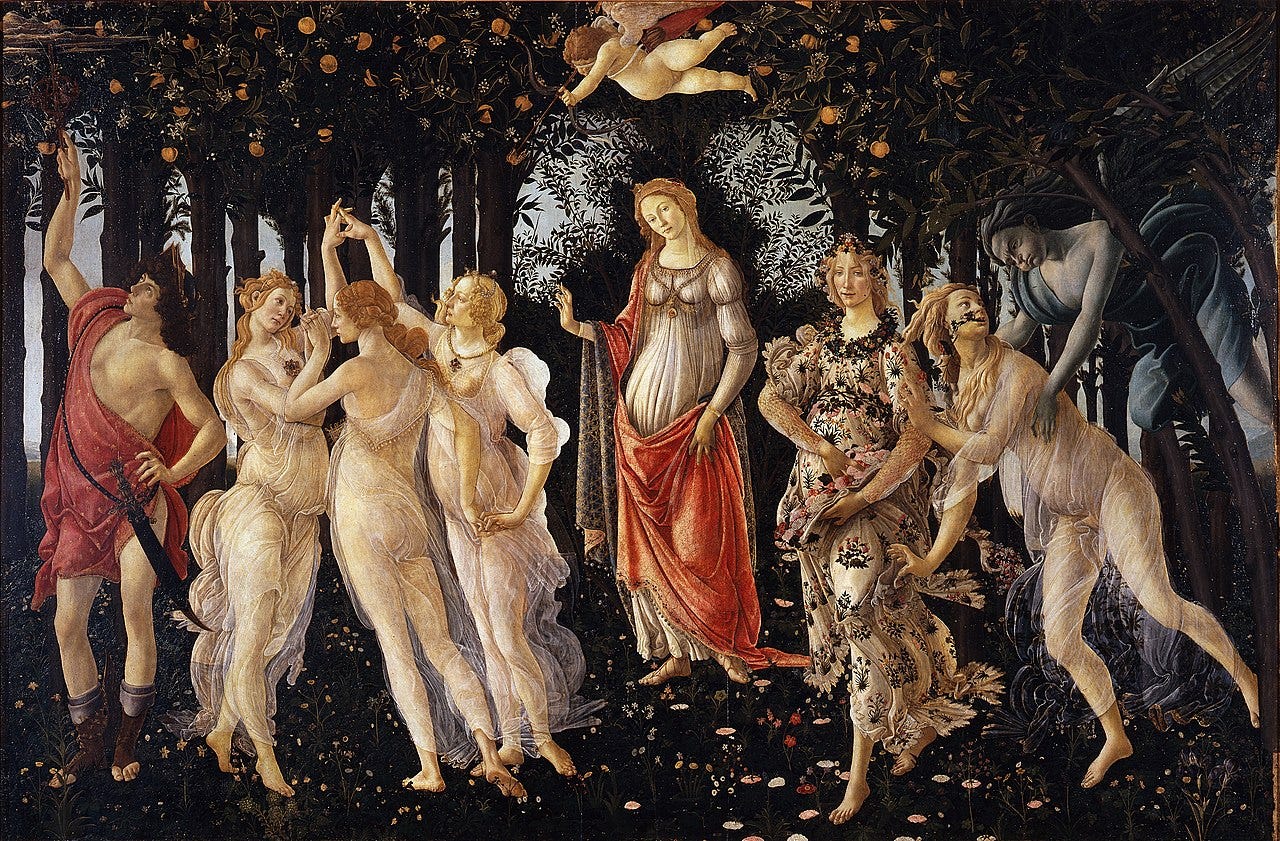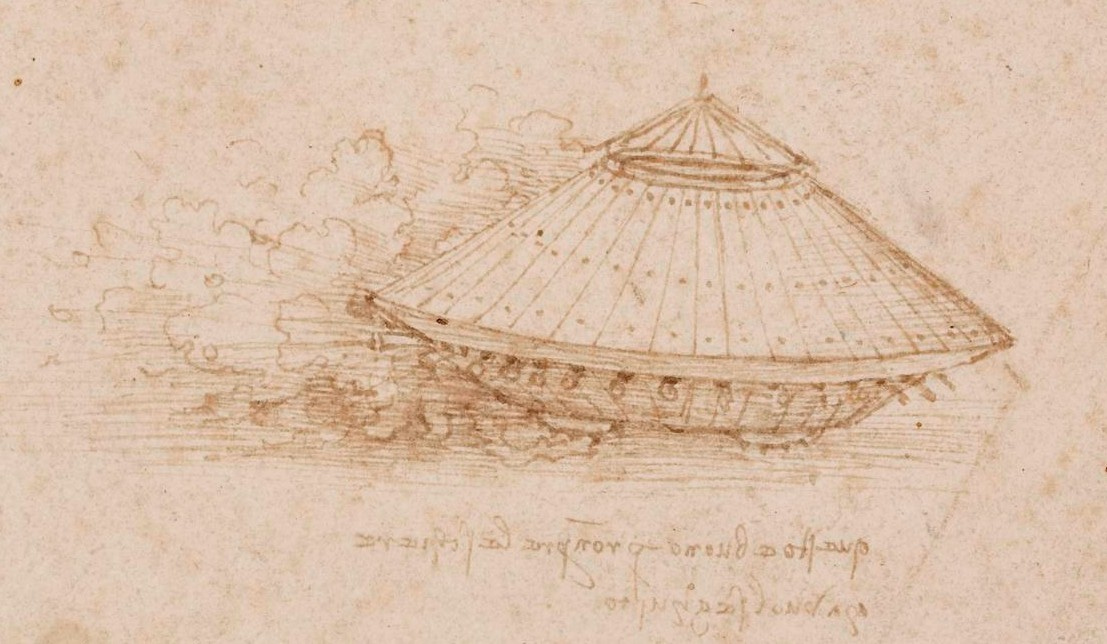Second Renaissance: what's in a name?
We outline the reasons that led us to adopt the term second renaissance for this moment of civilizational crisis & awakening - recognising that it is but one framing for what is going on in the world
What's in a name? That which we call a rose
By any other name would smell as sweet;— Juliet, Act II, Scene II of Romeo and Juliet
For us, the term 'Second Renaissance' captures a powerful idea: a moment of civilizational renewal as modernity breaks down and a new paradigm emerges. We call this a 'Second Renaissance' because it reflects a time of significant change, similar to the Renaissance period in Europe.
For an outline and introduction to the Second Renaissance see the second renaissance project website and the associated second renaissance whitepaper.
We also appreciate this perspective may not resonate with everyone. There is a wealth of diverse voices and ideas within the broader space, and we value engagement and dialog with multiple perspectives including on this naming question.
Here, we outline the reasons that led us to adopt 'Second Renaissance' as a term, recognising that it is but one framing for what is going on in the world and the responses that have been emerging within this space and beyond.

To name, or not to name?
When we began our ecosystem mapping project at Life Itself five years ago, we encountered a linguistic challenge. When we inquired about the names or terms people used to describe this space, we were met with a mix of laughter and uncertainty. It became clear there wasn't a single, widely recognized term.
By the time of our second report in 2021, we already a diverse list of at least 5-8 different terms that had emerged from our conversations: metacrisis, metamodern, integral, teal, regenerative, great turning and more (see "Many Names, One Ecosystem? for a fuller review of the main names and terms we encountered). This made communication about the ecosystem difficult, both within our team and with others. The proliferation of terms also created a communication barrier, especially for newcomers encountering obscure terminology like “metamodern”, “metacrisis”, or “integral”.
At first, we attempted to champion a single term, primarily 'metamodern,' but none resonated universally. Eventually, we resorted to the rather unappealing acronym 'PIP' (paradigmatic, integrative, and pragmatic), which unsurprisingly never caught on either.
Meanwhile, we had come across use of the term “second renaissance” in Francisco Varela's book, Ethical Knowhow: Action, Wisdom, and Cognition. There, Varela describes the re-“discovery” of Asian philosophy and particularly Buddhism as a 'second renaissance' in Western cultural history.
Independently and coincidentally, in 2022 one of our co-founders Sylvie Barbier did a performance art piece and installation named Prophecy. Taking place in Florence, the birthplace of the first Renaissance, the piece envisioned two possible futures: one of breakdown and decline and the other of the coming of a “Second Renaissance”. Following that we started to regularly use the term “Second Renaissance” and try it out with others.
This term reflects both the historical period of transition we find ourselves in ('a time between worlds') and the movement we see arising to address the challenges of our time and steer civilization towards a flourishing future. For a more detailed explanation of how we are currently defining the Second Renaissance, read our short introduction.
Why we were attracted to Second Renaissance as a term
Here we set out a few of the reasons why we’ve found second renaissance attractive as term.
Accessibility to a broader audience through historical resonance
While 'Second Renaissance' may not be a common term, Western audiences at least, likely possess a baseline understanding due to a general awareness of the first Renaissance. This inherent familiarity stands in contrast to neologisms like “metamodern” or “metacrisis”. These concepts require significant explanation and can come across as jargon, potentially alienating those who are unfamiliar with them. “Second Renaissance”, on the other hand, evokes a sense of societal rebirth on the scale of the Renaissance of the 15th and 16th centuries, making it a more straightforward term to grasp.
Positive framing whilst recognizing darkness before dawn
In addition to its clarity, we found 'Second Renaissance' has a more positive framing than some of the alternatives. While 'metacrisis' and 'polycrisis' are important concepts, they solely emphasize crisis. 'Second Renaissance' connotes rebirth, new possibilities, and a sense of hope, making it a more inspiring term. At the same time, renaissance acknowledges crisis and breakdown: rebirth is from something, and in the specific historical analogy, the first renaissance was preceded by the decline of the high middle ages and the terrible 14th century as famine and plague swept across Europe.
The power of historical analogy
History may not repeat, but it sometimes rhymes. [attributed to Mark Twain]
As already noted, the second renaissance term benefits from the general familiarity with the (first) renaissance. However, this analogy goes further and deeper than simple accessibility. Here we illustrate a few of those.
First, the renaissance was also a moment of transition from one world(view) to the next where culture and society changed in profound ways. Second, the first renaissance was preceded by major breakdowns and was a time itself of tension and conflict. This analogy may be useful in making sense of the polarization and crisis we are witnessing in many of our societies today.
Third, the temporal aspect. The renaissance (and modernity) came to fruition over a long timescale with the first states to operate fully on modern, renaissance principles only emerging centuries after the renaissance began. Similarly, today, new views and values emerging now may take significant time to become widespread and socially significant.
Fourth, the "shadows" of the renaissance. As well as Leonard da Vinci, the renaissance produced the conquistadores voyaging to "new world" initiating colonialism and genocide. This knowledge should make us reflect on shadows of the second renaissance and how we can guard against them.

In summary, the first renaissance has several valuable historical analogies that provide people with an immediate and intuitive grasp of some unfamiliar and difficult ideas e.g. cultural evolution and paradigm shifts, the idea of group and cultural shadows, darkness before dawn and the relationship of crisis and renewal.
Furthermore, the analogy is sufficiently distant in time that it makes it easier to look at – it is not culturally charged in the way that the Chinese Cultural Revolution or the American Civil War still are for many.
Versatility naming both period and movement
Another reason we liked 'Second Renaissance' is its versatility. It can naturally refer to both the transitional period we're experiencing as a civilization, and the ecosystem or social movement that aims to cultivate it.
Focusing on transition and birth rather than end state
Finally, there are some advantages to using a name that focuses more on transition and (re)birth rather than on the end state. In our experience, naming the end state (e.g. with terms like metamodern, integral, teal etc) tends to be more contentious. Different groups are already clustered around a particular term – and its specific features and feeling – and that can make alignment on any one term difficult. We have therefore found 'Second Renaissance' helpful because it emphasizes the process of transition and birth, rather than naming and dictating a specific destination.
Letting go
In this short essay, we have outlined some of the reasons that drew us to the 'Second Renaissance' as a name and frame. We feel that it is relatively familiar for Western audiences, has some immediate meaning for wider audiences, carries a hopeful connotation, and highlights the process of transformation and renewal.
Overall, we believe common terminology would be helpful and necessary as we seek a wider audience for these ideas and approaches. At the same time, whilst we see the attraction of this particular term, our real commitment lies with the core principles and values that define the vision and movement that we aspire to cultivate, regardless of how it is named. Specifically, if a different framing or terminology better serves these principles, we welcome its emergence.
Colophon
This piece was first posted on the Life Itself blog in April 2024: https://lifeitself.org/blog/second-renaissance-name-why






This is a beautiful project, and I am very inspired as I gaze upon the “ecosystem map” you created.
I’m a newcomer to this space — largely working to preserve the inner soul of Judaism while reckoning with our deep entanglement with settler colonial ideology. As a community ecologist, I hope to get the opportunity to explore more deeply this complex landscape of thinkers, activists, scholars, and teachers — each feeling the demand of our moment: the zeitgeist.
I found the notion of the ecology of love through my own introspection. This concept lies at the heart of Judaism, but seems to be time and time again lost to the self-preservation instincts that maintain the Jewish people as separate and distinct. I have found a niche in this ecosystem where I must build a bridge: between Judaism and Christianity, between neighbors and kin.
I’m excited to see where this second renaissance takes us, and pray this vast community will have the courage and wisdom necessary to abolish tribalism and systems of domination.
Food for thought is that it may be a bigger shift that the Renaissance was. It also could be compared to when Copernicus took Earth out of the center of the universe, where Earth's domination went well with kings, but with this new information eventually we got to democracy. Brian Swimme, who I see as one of the most important people alive today, says, "Our revolution in thinking dwarfs Copernicus’s announcement that the Earth travels around the Sun." A new comic order is even more seismic than a renaissance.. I'm just saying...